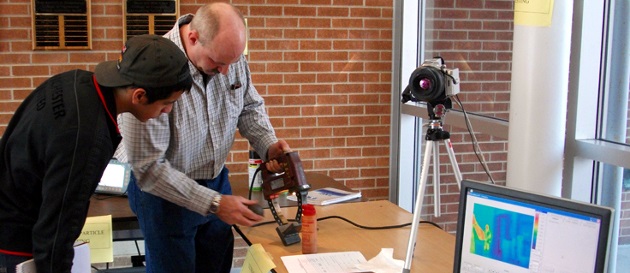Non-Destructive Evaluation
Main Content

Non-destructive evaluation (NDE) commonly referred to as non-destructive testing or inspection (NDT/NDI) is a non-evasive method of inspecting and characterizing materials. The magnitude of damage detection and prevention in existing infrastructures such as highway, bridges, aircraft, railroads, gas and liquid transmission pipelines, waterways and ports, and buildings is of high importance today. This problem has increased dramatically in the last three decades and is likely to continue increasing. Furthermore, an entire new generation of civil, mechanical, and aerospace structures is being developed that utilizes composites as their main building blocks. These include commercial and military aircraft, space vehicles, composite bridges, and machines that use composites in some form or another. Various types of NDE techniques are widely applied today for determining the integrity, reliability, and safety of various structures during the manufacturing process or during day to day in-service operations. Some of the common NDE methods include visual inspection, penetrant testing, magnetic particle testing, electromagnetic or eddy current testing, radiographic testing, and ultrasonic testing. Other advanced NDE methods include infrared/thermal testing, acoustic emission testing, acoustography testing, microwave and millimeter wave methods, terahertz testing, backscatter radiography testing, and shearography testing.
IMEL research of NDE is focused on graphite/epoxy composite laminates, composite repairs, honeycomb materials, bonded sandwich structures, and C/C composites used for commercial and military aircraft applications. We are primarily devoted to performing a comparative study of two NDE approaches: transient infrared thermography and ultrasonic NDE techniques. For example, primarily defects within composites include resin pockets (voids or porosity), foreign object inclusions, delaminations, cracks, and impact damages. It is crucial to identify and characterize these defects for the safety, reliability, and integrity of composite structures. For this, efficient, effective, easy-to-implement, and easy-to-operate NDE approaches are developed in the Intelligent Measurement and Evaluation Laboratory (IMEL) for composite inspections.



